The Project
In April of 2014, Historic Deerfield enlisted the services of conservation student Michelle Boyce from Middletown, Connecticut. Boyce, who graduated in May 2013 from the Fashion Institute of Technology in New York with a master’s degree in textile conservation, created mounts for three items of women’s clothing in the museum’s fashion and textile collection; two corsets and an embroidered net collar. These mounts will serve to properly support the corsets and collar during times of display and rest, minimizing handling and preserving them for future generations.
The embroidered collar is part of an important constellation of early 19th-century objects in Historic Deerfield’s collection. Their nexus is a portrait of Hadley, Massachusetts, resident Mary Jones (1817-1865), painted by itinerant artist Erastus Salisbury Field (1805-1900) around 1836. Both the collar and a ring seen on Jones’ left hand survive with the portrait, which was acquired by the museum in 2001.
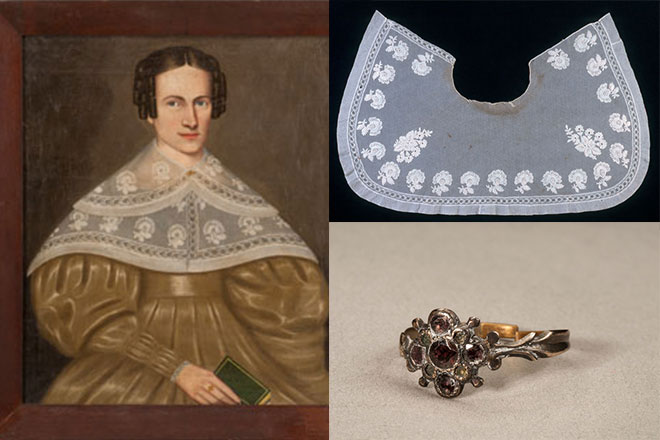
The corsets help to tell the story of shaping undergarments, which were an essential invisible component of fashionable silhouettes for hundreds of years. One corset was made for a young girl in the early 19thcentury, gently suggesting correct posture with shoulders down and back, and an elevated waistline. The other corset, dating to the last quarter of the 19th century, was made in Belgium by the mysterious “P.D.” manufactory, and imported by New York City wholesaler James McCreery & Co. This example perfectly illustrates the extremes of the fashionable shape to women’s bodies at that time, with a very narrow waist and extremely curvaceous bust and hipline.
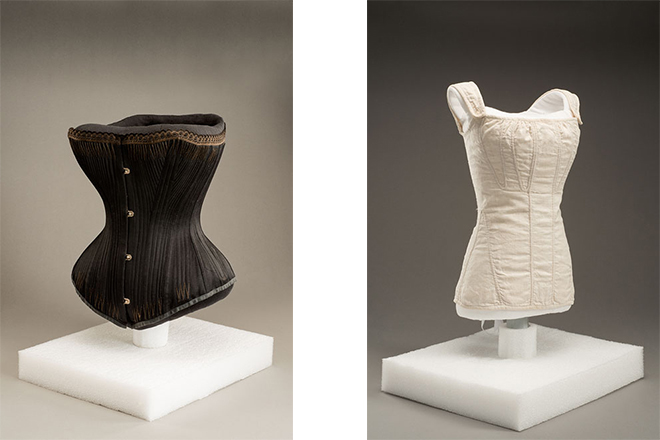
Corset: Gift of Mrs. Fred Thompson, T.016/021 Corset: Gift of Mr. and Mrs. Joel Harris Newell, V.100i
Why not just store them flat?
Why did we choose to enlist the services of Boyce for these mounts? Storing these items flat would save on space and take a lot less time. Unlike other items in the clothing collection, these were made expressly to envelope the three dimensional bodies of their wearers, without much regard for the two-dimensionality of the textiles which made them up. As such, they don’t lie perfectly flat to begin with. Padding can help to approximate the fit of these items when originally worn, yet even with padding, storing these items flat on one side can contribute to long-term damage, including warping of the object or added strain on garment seams over time.
Attention to Detail
Boyce devised a plan for making mounts that properly supported these items in a vertical position, as they were made to be worn, thus maximizing long-term preservation. Not only did this involve achieving the correct shape for each mount, but also using archival materials and adhesives that would not give off gases or accelerate deterioration over the long term. For the corsets, this meant buckram, a plain weave linen fabric stiffened with glue. When wet, buckram can be molded and dried to a desired shape.
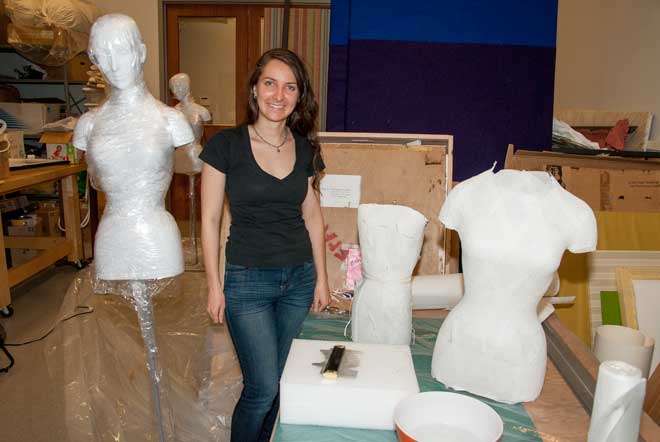
Boyce began by carefully measuring each corset for their dimensions. Existing mannequins on which the museum displays women’s clothing were used as the basis for the supports, providing the approximate shape of the original wearers. Then Boyce wrapped wetted buckram around two mannequins. The drying process, which took 3 days, yielded a hard shell that had to be carefully cut from the mannequin.
Once she manipulated the buckram for each corset’s shape, Boyce then began customizing each form. In the case of the girl’s corset, she had to significantly reduce the smaller corset’s buckram form. Conversely, the black corset’s mount had to be substantially padded out in the bust and hips. Each form was padded with inert polyester batting (often used for quilting) to soften edges and contour the shapes, then covered with a cotton knit fabric that had been washed and dried (to eliminate sizing and finishes found on many newly purchased fabrics that might degrade objects upon direct contact over time). After last-minute adjustments each corset was placed onto its mount, and fastened using modern lacings to approximate the originals.
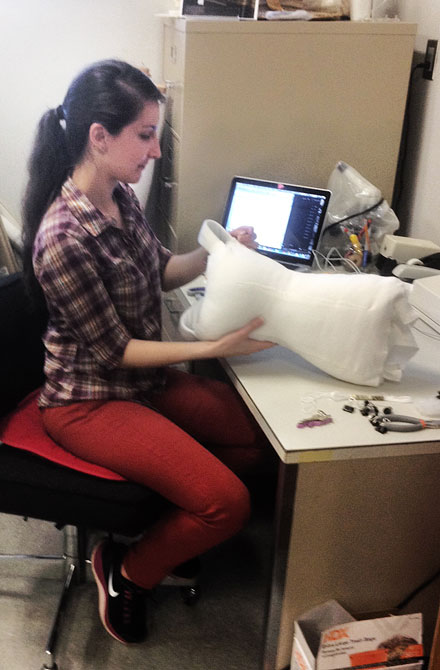
For the collar, a soft, unsupported circular shape dictated a different material for its base. Boyce chose Ethafoam, a dense cellular inert material that can be easily carved to the desired shape. Once again, Boyce employed polyester batting to soften edges and finish the supportive shape, approximating the human shape of its original wearer. She then completely covered the structure in washed cotton knit.
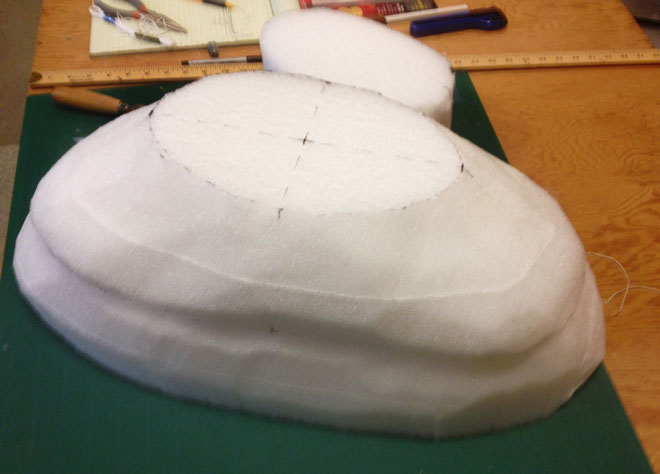
Challenges
Working with old objects always presents its own set of challenges. During her work on the collar, Boyce discovered that the proper right shoulder was longer than the left side. To accommodate that irregularity and properly support the collar, she had to add padding to that side of the mount, and support the extra weight with a layer of foam underneath. Because the black corset reflected a very curvaceous form, it required dense padding, held in place with nylon stocking. The girl’s corset contains shoulder straps that would have fastened onto the wearer for added support. These straps naturally need support, but in a way that does not distract when the corset is on view. Boyce met that challenge, too, by creating near-invisible extensions under each strap, padded and encased in the same materials as the corset body itself.
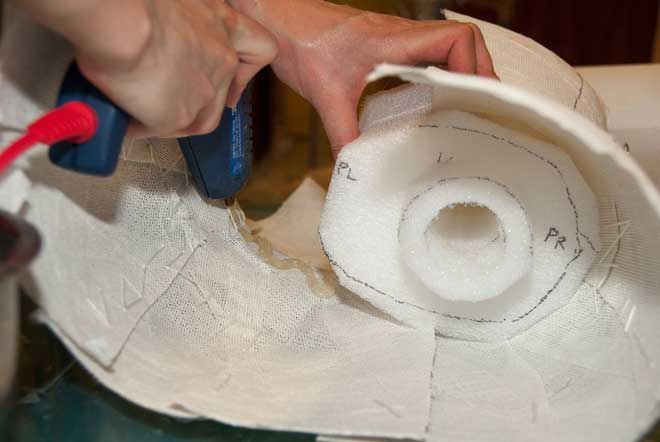
Boyce developed bases for each mount as well. Special tubes will connect each object’s mount to their base, so that shorter lengths can be inserted for storage when off view; longer tubes or poles can likewise be employed when displaying these items near eye level. Historic Deerfield is so grateful for Michelle’s talent and dedication to making this project a reality. With the bar set high, it is our hope to continue her work and raise funds to finish mounts for other corsets in the collection.